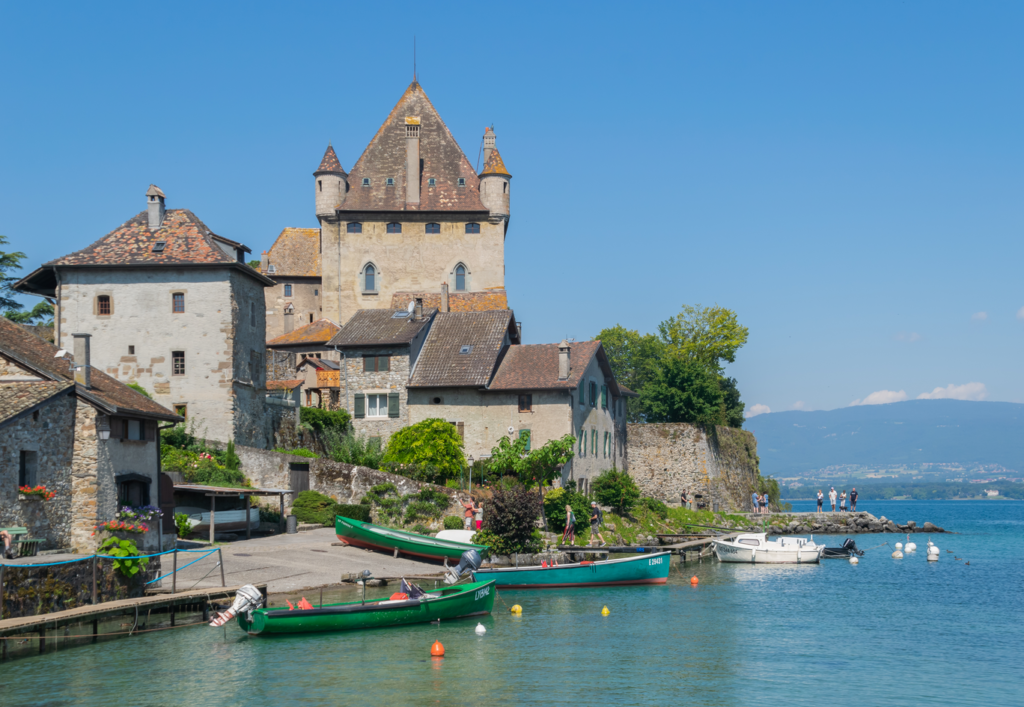In the heart of France, the Auvergne-Rhône-Alpes region hides little treasures. It’s a corner full of surprises, with villages each having their own charm. In this article, we are taking you on a tour of 25 magnificent villages. Together, we will discover places like Pérouges, with its medieval streets, Yvoire and its postcard landscapes, and La Garde-Adhémar with its historical riches. Whether you love nature, history, or good food, there is something for everyone. So, get ready, we are heading out on an adventure to explore the hidden pearls of Auvergne-Rhône-Alpes!
1. Arlempdes, Haute-Loire
⭐ Labeled “Les Plus Beaux Villages de France” (“The most beautiful villages of France”).
Emerging around a bend, visitors are greeted by the striking spectacle of Arlempdes, perched atop a volcanic pinnacle encircled by a meander of the Loire River. The village unveils the remnants of its castle, the first along the river from its source, offering a glimpse into a bygone era.
Arlempdes is not just any ordinary site; it has earned recognition from the national geological authorities, the BRGM, as being rare in France. What you see today of the magmatic rock prominence upon which the village sits is the result of centuries of erosion. Over time, this natural process has revealed a feeder conduit of a volcanic vent, presenting itself as an immense rock towering impressively over the Loire River. The aesthetic of the rocks – a jumble and intertwining of prisms and needles – enhances the dramatic nature of the site.
Simplified, yet brimming with geological wonders and historical tales, Arlempdes invites you for a visually enriching experience, where every glance is a brush with the spectacular. The village’s unique combination of natural beauty and historical depth makes it a must-visit for those seeking the extraordinary in the heart of France.
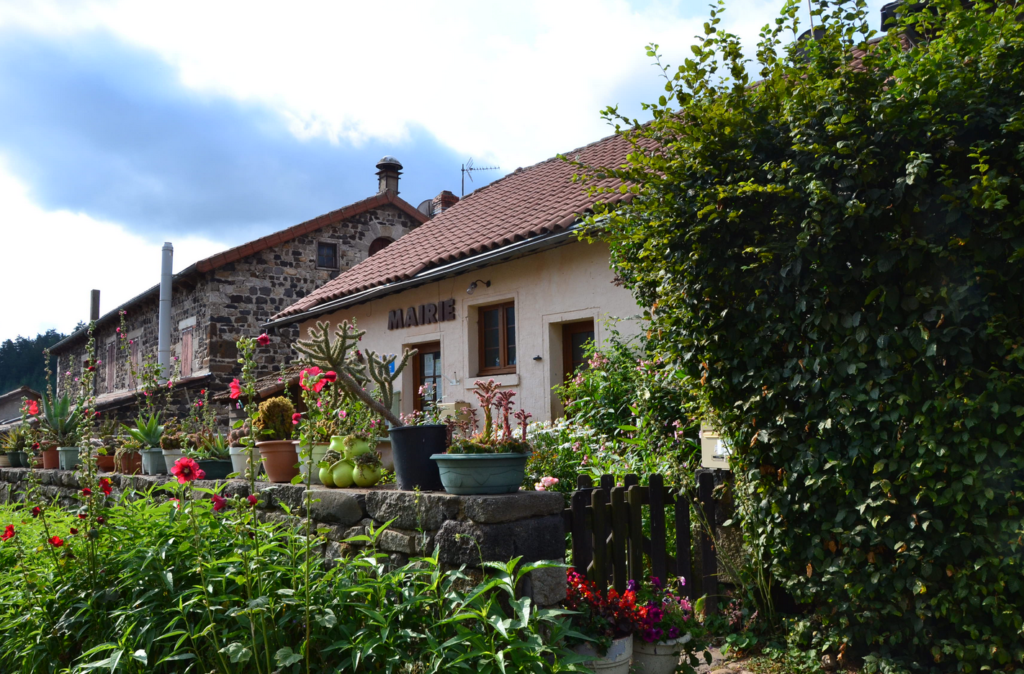
2. Balazuc, Ardèche
⭐ Labeled “Les Plus Beaux Villages de France” (“The most beautiful villages of France”).
Balazuc, nestled in the Ardèche department, is a picturesque destination steeped in history and charm. As you visit, you’ll quickly notice it still preserves its medieval roots, standing proudly on a cliff overlooking the Ardèche river.
Imagine wandering through a labyrinth of winding alleys, where every turn reveals another piece of history. Here, ancient vaulted passages invite you to delve deeper into the heart of the village’s heritage, with the ever-present echoes of the past guiding your footsteps.
Don’t forget to visit the remains of the castle, once home to the Lords of Balazuc, a testament to the village’s noble history. Nearby, the fortified Romanesque church stands as another jewel of the region, offering both spiritual and architectural enrichment.
As you stroll through the streets, make your way to the original gates of the village, where you can admire the fortifications that have stood the test of time, offering a glimpse into the lives of the people who once walked the same paths centuries ago.
Experience the beauty and the history of Balazuc, a place where every stone tells a story, where every path leads to a new discovery. It is a village where the past meets the present, inviting travelers from all over the world to step back in time and immerse themselves in a rich tapestry of history, culture, and natural beauty. Make it a point to visit and take in the tranquil surroundings and the captivating tales that this stunning village in the Ardèche has to offer.
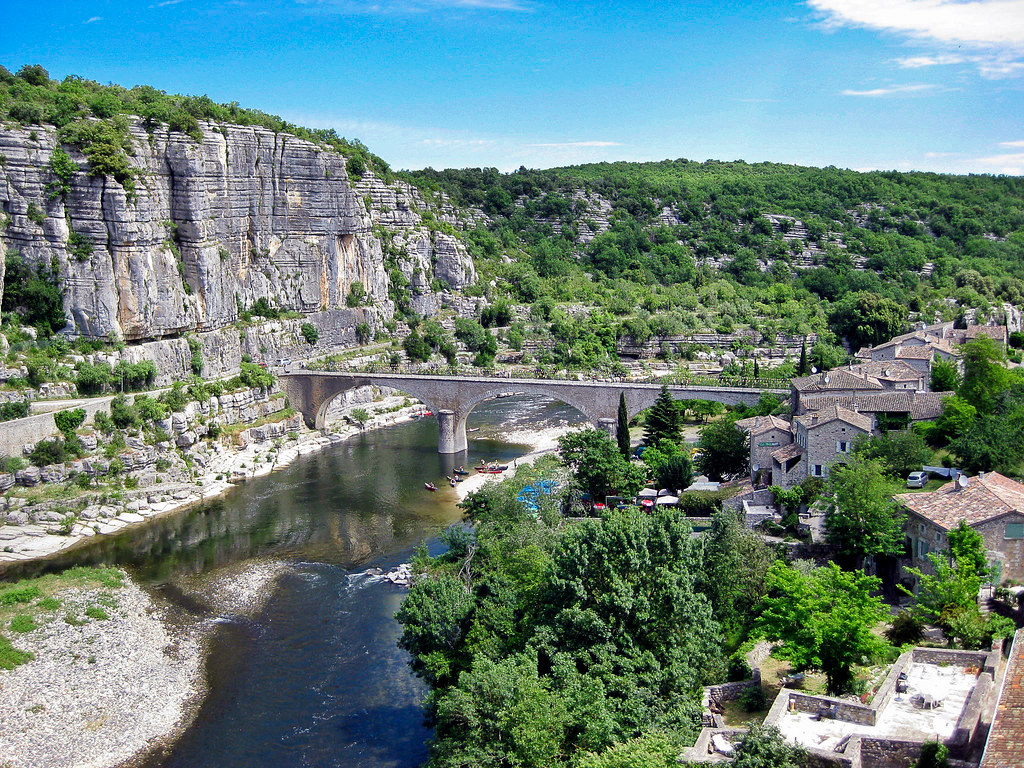
3. Blesle, Haute-Loire
⭐ Labeled “Les Plus Beaux Villages de France” (“The most beautiful villages of France”).
Blesle, located in the Haute-Loire department, is a village with a rich history that dates back to the 9th century when its Benedictine abbey was established. This abbey not only gave birth to the village but also spearheaded its development and prosperity.
Though time has taken its toll and much of the fortress constructed by the barons of Mercoeur is gone, visitors can still admire the remaining dungeon, towers, and surrounding walls. These structures stand tall, holding stories of the past and adding to the medieval charm that envelopes the village.
As you stroll through Blesle, don’t miss the chance to observe the wooden-framed houses and intricately carved doors, which echo the skill and artistry of craftsmen from bygone eras. These details, present all around, convey the rich medieval history that the village proudly harbors to this day.
A visit to Blesle promises not just a trip to a village, but a journey through time, offering glimpses of a bygone era through its well-preserved architectural elements and the timeless aura that pervades the streets of this historic French village. It is a perfect destination for tourists seeking to immerse themselves in history while enjoying the natural beauty and peaceful ambiance of Haute-Loire.
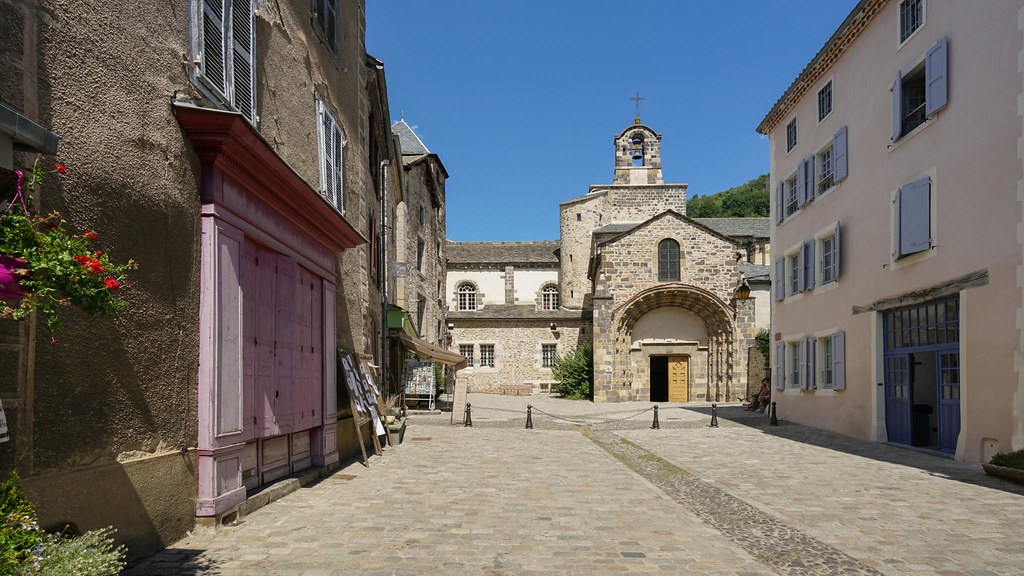
4. Bonneval-sur-Arc, Savoie
⭐ Labeled “Les Plus Beaux Villages de France” (“The most beautiful villages of France”).
Tucked away in the valley of Haute Maurienne and surrounded by the majestic mountains of the Vanoise massif, Bonneval-sur-Arc retains the enchanting charm of a human-scale village station.
While the traditional “cohabitation house,” where men and animals shared the same roof during winter is no longer in practice, some age-old customs still linger. A stroll around the village reveals grebons drying on wooden balconies – bricks of sheep dung mixed with straw, once used for heating.
Curious about local life and history? The Espace Neige et Montagne is your go-to place for insights into daily life, craftsmanship, and the history of mountaineering in Bonneval. And when hunger strikes, make a delicious stop at the cooperative dairy to taste the “Bleu de Bonneval” and Beaufort cheese.
A short 4km away, don’t miss a visit to the hamlet of l’Ecot, built around a 12th-century chapel and one of the filming locations for recent adaptations of “Belle et Sébastien.”
For the outdoor enthusiasts, the adventure doesn’t stop here! In winter, besides Bonneval’s ski area, explore the entire Haute-Maurienne territory within 30 kilometers, including Valfréjus, Val Cenis, and the charming village of Bessans. Famous resorts like Val-d’Isère and Tignes are also within a 30 to 45-kilometer radius.
When summer arrives, it’s time to explore Vanoise on foot. With high mountain guides, uncover the geological, floristic, and faunistic treasures of the region. And to truly soak in the panoramas of the stunning region, travel the mountain roads in good weather! Close to the Italian border, Col du Mont-Cenis will lead you to the beautiful lake of the same name at 2000 meters above sea level, while Col de l’Iseran, one of the highest and most iconic in Europe (2770 meters), allows you to traverse the Parc National de la Vanoise from Tarentaise to Maurienne.
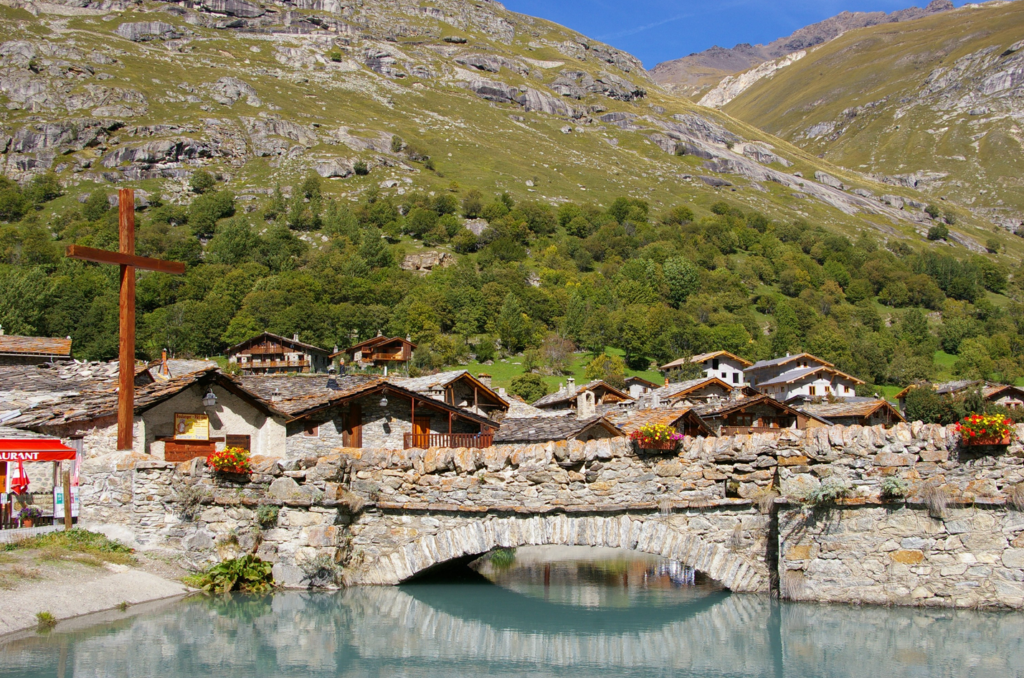
5. Charroux, Allier
⭐ Labeled “Les Plus Beaux Villages de France” (“The most beautiful villages of France”).
Charroux, strategically located 30 km west of Vichy and 20 km south of Saint-Pourçain-sur-Sioule, is your gateway to a unique bourbonnais experience filled with charm and character. This village is not just picturesque; it has a distinct flavor – literally! It’s famed for its mustard, a culinary delight that has found its way into the kitchens of renowned chefs and onto international tables.
But that’s not all. Beyond its gastronomic allure, Charroux boasts a rich heritage as a former trading and fortified location. As you stroll through its historic streets, every corner has a story to tell, and each step brings you closer to its vibrant past.
One event that has put Charroux on the map is the Fête de la soupe. Initiated in 2007, this annual November festival has become a staple in the village’s cultural menu. The concept is simple yet engaging: upon arrival, you buy a bowl crafted by the local potter, which becomes your passport to taste over fifty homemade soups offered by the locals right on their doorsteps as you explore the medieval cityscape.
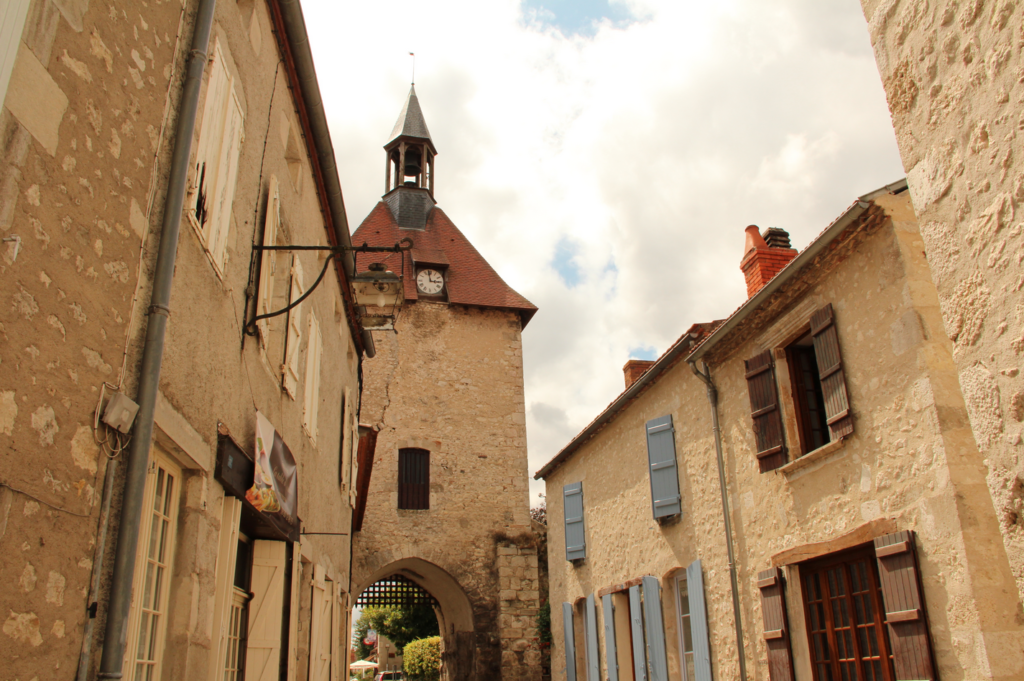
6. Châtillon-en-Diois, Drôme
⭐ Labeled “Les Plus Beaux Villages de France” (“The most beautiful villages of France”).
Châtillon-en-Diois, perfectly situated at the heart of a triangle formed by Valence, Montélimar, and Gap, stands as a testament to the harmonious blend of history and nature.
As you approach this picturesque setting, your eyes are greeted with sprawling vineyards under the tender care of the warm sun that graces the southern Vercors region. It’s an invitation, a call to slow down and take in the subtle aroma of ripening grapes, a scent that promises rich and delightful wines, crafted through generations of tradition.
But the vineyards are just the beginning. Venture further, and the medieval heartbeat of Châtillon-en-Diois comes alive in its remarkable medieval facades. It’s like stepping into a different era, where each stone and corner holds stories of yesteryears, ready to be rediscovered through leisurely strolls through the narrow streets, rich in history and character.
And as the golden rays of the sun play gracefully on the ancient stones, offering a warm embrace to all who visit, you can’t help but feel a sense of connection, not just to the place, but to the generations that have walked these streets before. It’s more than a destination; it’s a journey through time, a place where the past meets the present in a warm, sunny embrace. So come, take a step into history, and let Châtillon-en-Diois unfold its tales to you.
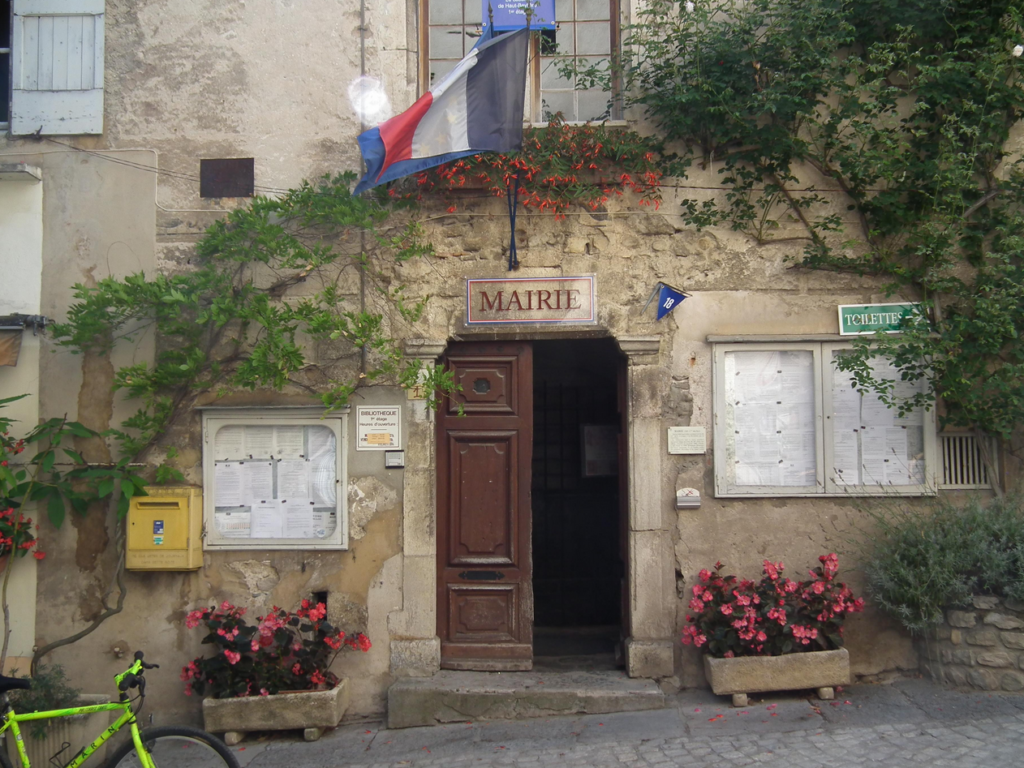
7. Grignan, Drôme
⭐ Labeled “Les Plus Beaux Villages de France” (“The most beautiful villages of France”).
Situated a stone’s throw away from the renowned Enclave des Papes, southeast of Montélimar, lies Grignan, a place where the rich tapestry of history, literature, and nature vividly come to life.
Central to the village is its grand château, a dominating presence that stands tall, narrating tales of centuries gone by, right in the middle of a canvas painted with lush vineyards and lavender fields that stretch as far as the eye can see. It’s a sight that pleases the eyes and soothes the senses, offering a vibrant splash of colors that change with the seasons.
But the aroma of Drôme provençale does more than just tantalize your nostrils; it serves as an aromatic background to a rich literary heritage cherished in Grignan, greatly influenced by the letters of Madame de Sévigné. Her eloquent correspondence paints a vivid picture of the life and times of the seventeenth century, weaving a delicate thread that connects visitors to a time of refinement and eloquence.
To visit Grignan is to walk through a living storybook, where each step is accompanied by a symphony of sights, sounds, and scents that sing harmoniously, offering a delightful feast for the senses and a rich educational experience for the mind.
So, when you find yourself wandering through the poetic landscape of vineyards and lavender fields, let yourself be transported into a world of literary elegance and the robust flavours of Drôme provençale. Grignan awaits to offer you a journey through time, enveloped in the timeless embrace of nature and culture intertwined.
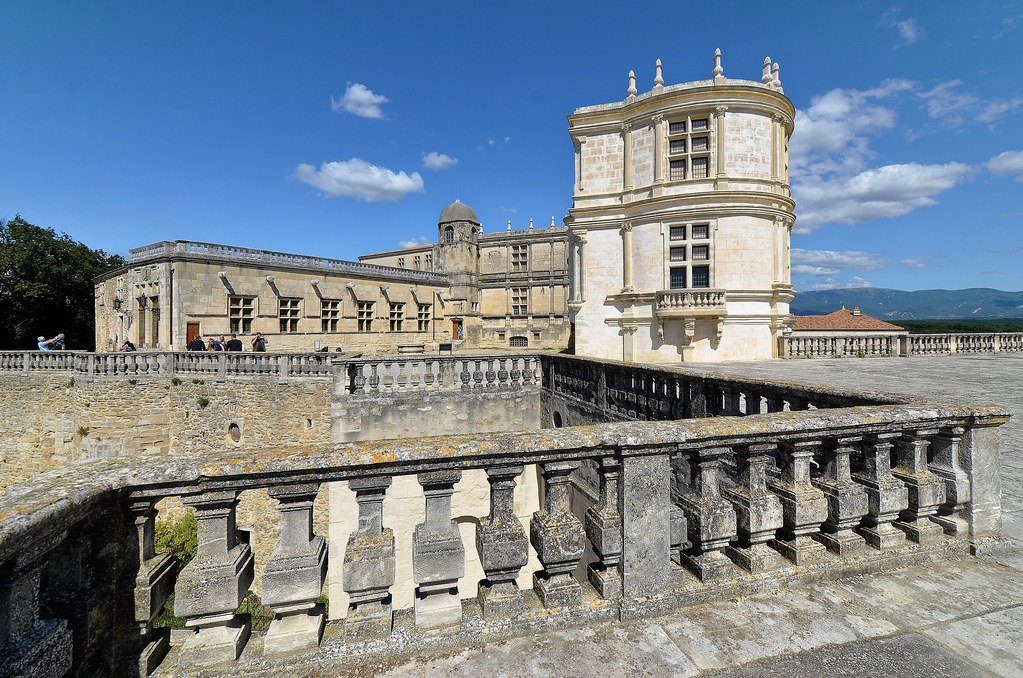
8. La Garde-Adhémar, Drôme
⭐ Labeled “Les Plus Beaux Villages de France” (“The most beautiful villages of France”).
In the picturesque region of Drôme, La Garde-Adhémar stands as a testament to the enduring beauty of French villages. This historic commune takes pride in its elevated position, offering breath-taking views and rich experiences steeped in culture and natural wonder.
As you wander through the stone streets of this captivating destination, you are introduced to a beautiful blend of history and nature. Whether it is the ancient, well-preserved facades that tell tales of the past or the vibrant flora that graces the Jardin des Herbes, every element in La Garde-Adhémar speaks to the soul, inviting contemplation and wonder.
The garden is a particular highlight, showcasing a delightful array of aromatic plants and medicinal herbs, carefully cultivated to offer a sensorial feast as you walk through. It is a veritable haven for botany enthusiasts and those looking to escape into the peaceful embrace of nature.
But there is more to discover. The Saint-Michel church, a remarkable Romanesque building, stands as a sentinel of time, housing secrets and stories of centuries in its ancient stones. Its simplistic yet elegant architecture offers a peaceful sanctuary where spirituality meets artistry.
Whether it’s the quiet moments of reflection in the beautiful garden, the historic narratives held in the stones of its buildings, or the warm and welcoming atmosphere cultivated by the locals, La Garde-Adhémar offers a rich and varied experience for every visitor.
So, take a moment to step into a world where time seems to slow, where beauty meets history, and where every path leads to a new discovery. La Garde-Adhémar beckons, promising a serene escape filled with small yet profound joys that stay with you, long after your visit.
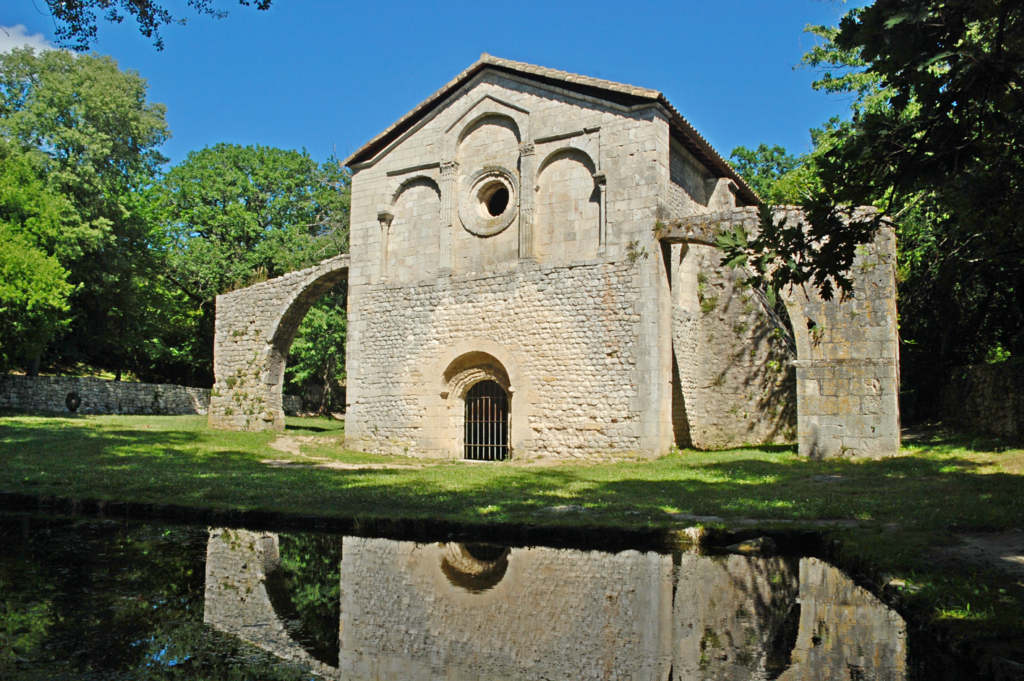
9. Lavaudieu, Haute-Loire
⭐ Labeled “Les Plus Beaux Villages de France” (“The most beautiful villages of France”).
No goats roam here today, yet their presence lingers in the aptly named “Rotte aux biques”, a path that tells tales of their past wanderings. Traversing the hillside, this trail gifts visitors with mesmerizing vistas of Lavardin village and the picturesque rolling hills of the Loir valley.
Part of the renowned GR35, the path is a gateway to discovering unique dwellings carved into the rock, known as troglodytic constructions. These structures, bearing the mark of time, serve various purposes – some as cosy homes, others as welcoming B&Bs, and a few as creative havens for artists.
As you walk the path, let the panoramic views and distinctive dwellings inspire wonder and creativity. Lavardin village, with its layers of history and natural beauty, awaits to unfold its stories and charm to every traveler seeking a connection with France’s enchanting landscape and heritage.
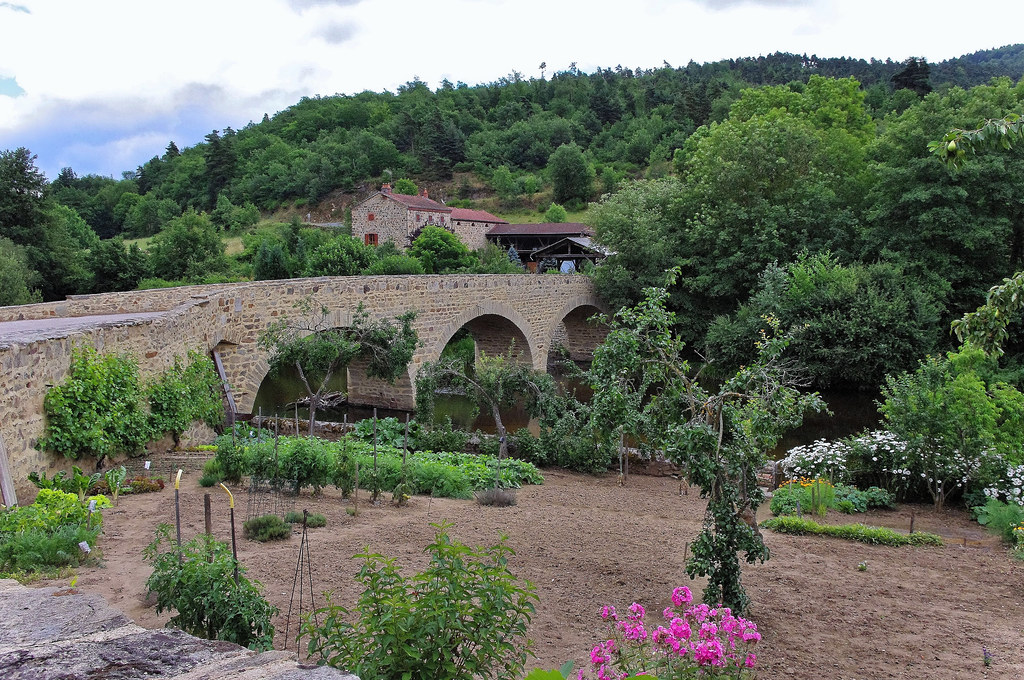
10. Lavoûte-Chilhac, Haute-Loire
⭐ Labeled “Les Plus Beaux Villages de France” (“The most beautiful villages of France”).
Tucked away in the southern part of the Auvergne region, Lavoûte-Chilhac is a haven for lovers of both heritage and nature. Encircled by a loop of the Allier River, this village offers a tranquil escape and a rich tapestry of historical stories.
One such tale dates back to July 8, 1496, when an image of Notre-Dame, cradling her child, was discovered by two young girls playing by the riverbank. This revered relic is believed by locals to have been the source of miraculous healings, leading to an annual pilgrimage every first Sunday of July, under the name “Notre-Dame-Trouvée”. The image is still preserved in the Sainte-Croix church, a blend of Gothic and Romanesque architecture, housing a collection of artifacts including a 12th-century Romanesque Christ and 16th-century stalls.
But Lavoûte-Chilhac is not just about reflections of the past; it is alive with activities for the adventurous at heart. From exploring the Gorges de l’Allier by canoe-kayak, swimming, fishing, to hiking (GR 470), cycling, or exploring on vintage mopeds and electric bikes, the village caters to all tastes.
For family-friendly adventures, head to La Maison des Oiseaux et de la Nature, home to meticulously carved wooden birds representing local species, or the Musée Paléontologique de Chilhac, just 4.5 km away. Further afield, Langeac at 13 km, offers more historical sites and the Conservatoire National du Saumon Sauvage.
Lastly, the equally charming village of Lavaudieu, another one of France’s most beautiful villages, is merely twenty kilometers away from Lavoûte-Chilhac, making it an ideal nearby exploration.
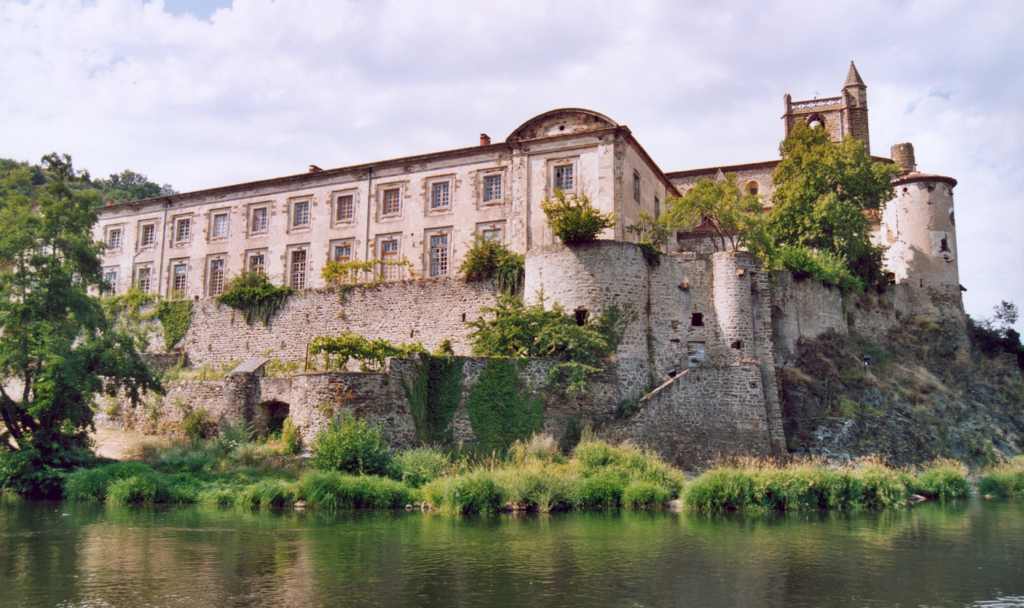
11. Le Poët-Laval, Drôme
⭐ Labeled “Les Plus Beaux Villages de France” (“The most beautiful villages of France”).
Situated just twenty kilometers from Montélimar, you will find Le Poët-Laval, a charming village nestled in the Jabron Valley, surrounded by fields of lavender and wheat. This picturesque spot was once a commandery of the Order of the Hospitallers, and from that era, it has preserved a castle, remnants of the Romanesque chapel of Saint-Jean-des-Commandeurs, and ramparts.
If you are planning a trip to France, Le Poët-Laval is a must-visit for lovers of history and natural beauty. Its bucolic landscapes and rich historical heritage are sure to enchant you.
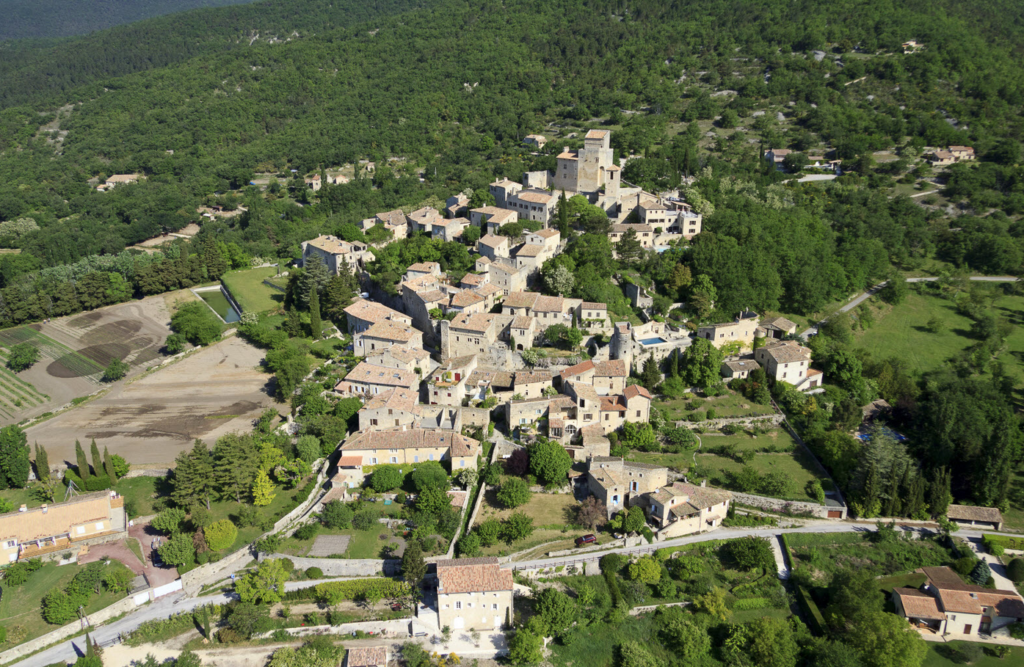
12. Mirmande, Drôme
⭐ Labeled “Les Plus Beaux Villages de France” (“The most beautiful villages of France”).
In the charming setting of Mirmande, picturesque houses with beautiful stone facades and ancient doors are hidden behind protective ramparts and intertwined within a labyrinth of narrow lanes. The village offers a visual delight and a stroll down its alleys is like a journey back in time.
Historically, Mirmande rose to prominence through silk worm farming until the late 19th century. However, it found renewed prosperity and fame through fruit production, a shift that marked a new chapter in its development.
As you explore, you might feel the lingering presence of creativity in the air, a testament to the days when the painter André Lhote resided here. Additionally, the renowned volcanologist Haroun Tazieff not only lived in Mirmande but also served as its mayor from 1979 to 1989.
In conclusion, a visit to Mirmande is a must for those intrigued by history, art, and natural beauty. The narrow lanes, stone facades, and stories of the past eagerly await your discovery in this village where every corner has a tale to tell.
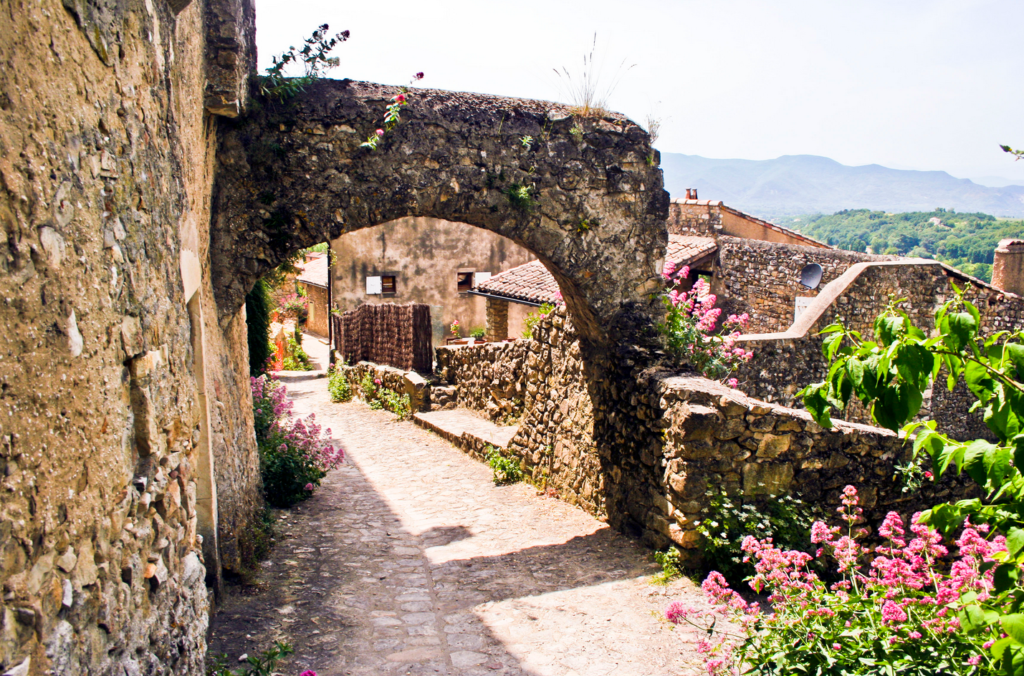
13. Montbrun-les-Bains, Drôme
⭐ Labeled “Les Plus Beaux Villages de France” (“The most beautiful villages of France”).
Overlooking a lavender-filled plain, the high-perched houses of Montbrun-les-Bains safeguard the remnants of an ancient medieval castle. Strolling through the narrow streets, you’ll find a recently renovated thermal establishment, reviving the benefits of an ancient source for over two decades. This village offers a serene atmosphere for those seeking tranquility and historical charm.
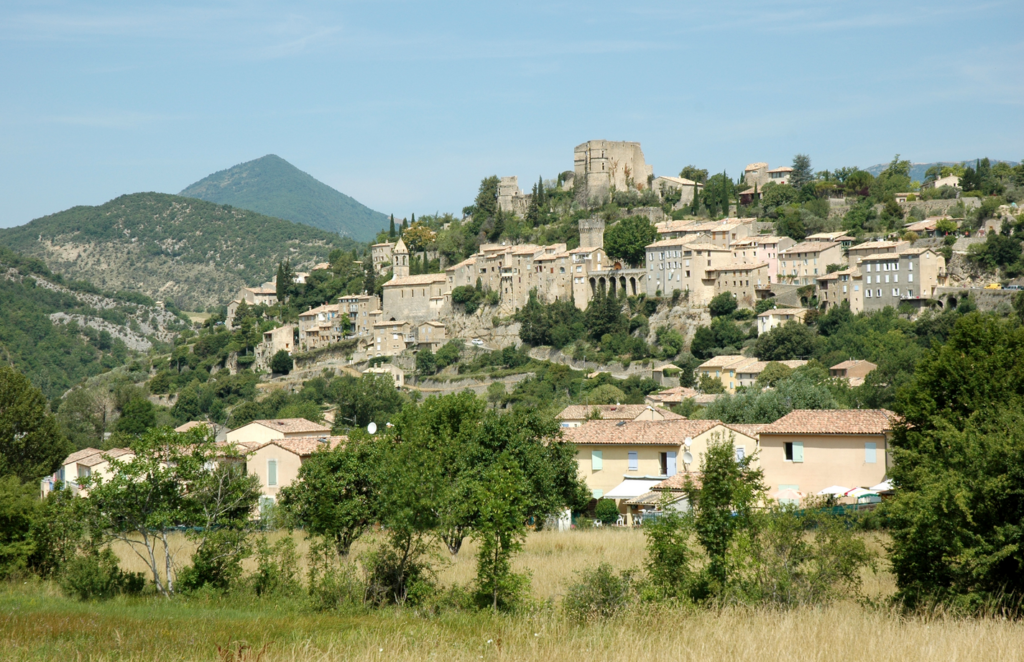
14. Montpeyroux, Puy-de-Dôme
⭐ Labeled “Les Plus Beaux Villages de France” (“The most beautiful villages of France”).
Moving south of Clermont-Ferrand, close to the volcanoes of Auvergne and the recently UNESCO-listed chaîne des puys, we find Montpeyroux. With a distinctive southern climate and architecture, this village presents a harmonious silhouette. Revitalized by locals after a period of decline, Montpeyroux now boasts vibrant artistry and charming vineyard houses. It offers a diverse range of activities for both adults and children, including interactions with local artists and craftsmen, educational farms, and hiking trails exploring the region’s iconic arkose stone and panoramic views.

15. Oingt, Rhône
⭐ Labeled “Les Plus Beaux Villages de France” (“The most beautiful villages of France”).
A short drive from Lyon, in the heart of the golden stone country of Beaujolais, lies Oingt. Rich in geology and heritage, this village offers a blend of viticulture and craftsmanship. Ascending to the top, the thirteenth-century tower rewards visitors with breathtaking views of the surrounding landscapes. Oingt is not only renowned for its architectural treasures but also for its unique passion for barrel organs and mechanical music, hosting an annual international festival in September. The surrounding vineyards welcome you for tastings, and nearby Villefranche-sur-Saône and Lyon offer further cultural and gastronomic delights.
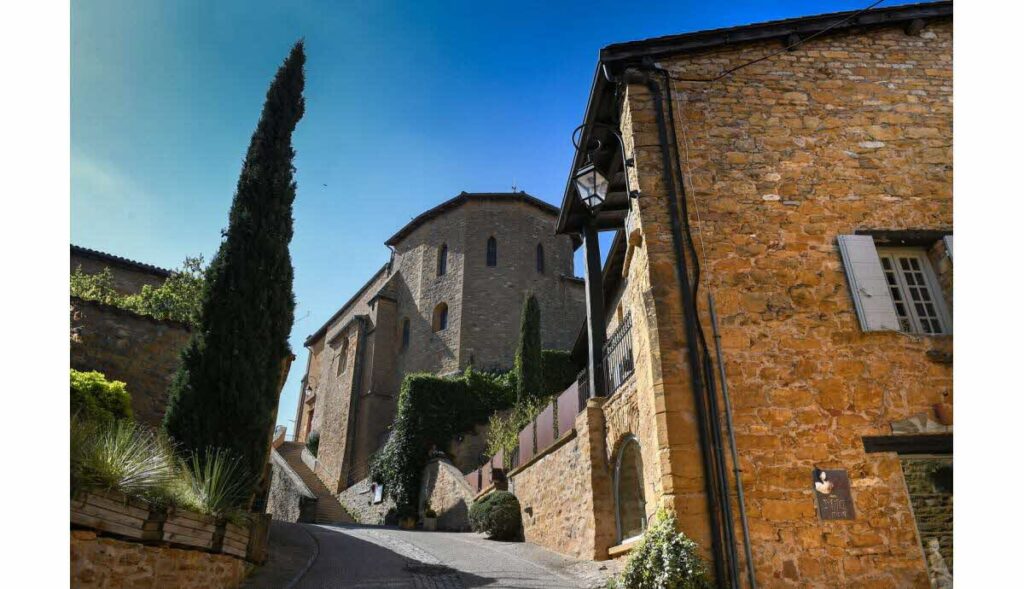
16. Pérouges, Ain
⭐ Labeled “Les Plus Beaux Villages de France” (“The most beautiful villages of France”).
On to Pérouges, a medieval gem located not far from Lyon, where history comes alive at every corner. Known for hosting the famous “Printemps de Pérouges” festival, this village offers a variety of eclectic concert venues and attracts thousands of spectators annually. Explore the historic architecture, visit the Maison des Princes, and indulge in the village’s sweet specialty, the galette de Pérouges. Pérouges also serves as a gateway to the diverse landscapes and vineyards of Bugey, with additional attractions like the Parc des Oiseaux and the Grottes de la Balme nearby.
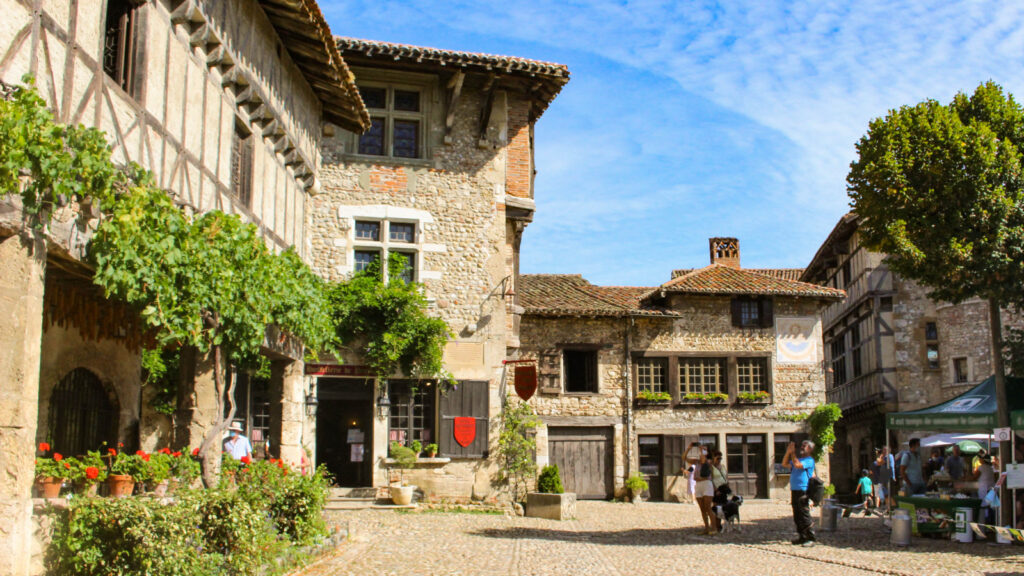
17. Polignac, Haute-Loire
⭐ Labeled “Les Plus Beaux Villages de France” (“The most beautiful villages of France”).
A few kilometers from Le Puy-en-Velay, stands the majestic fortress of Polignac, offering a unique 360° panorama of the Velay mountains and the Mégal and Mézenc massifs. Polignac is steeped in history, having connections to the princely family of Monaco. Visitors can explore the fortress, partake in a treasure hunt, admire the remarkable murals in the Saint-Martin church, and discover the village’s volcanic origins through the “chemin des Charrirous”.
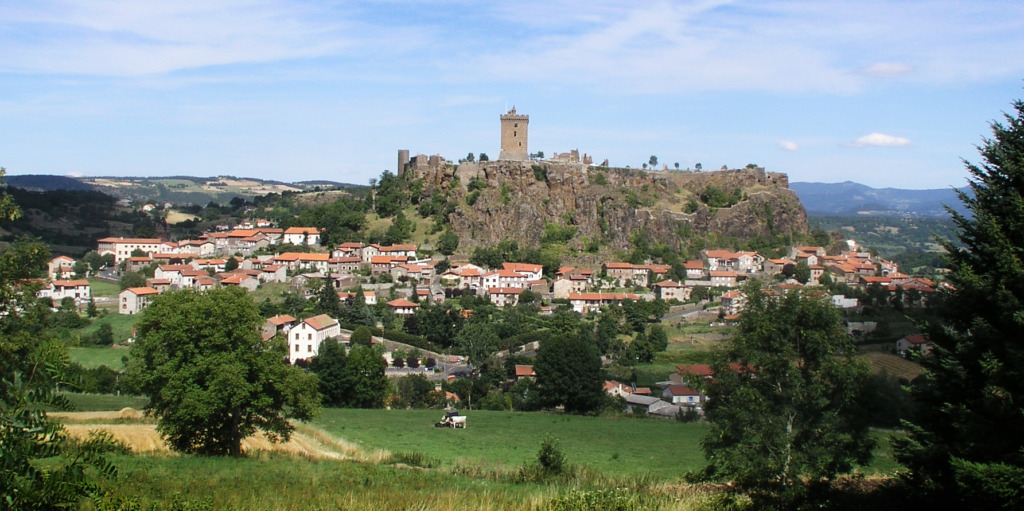
18. Pradelles, Haute-Loire
⭐ Labeled “Les Plus Beaux Villages de France” (“The most beautiful villages of France”).
Pradelles, Haute-Loire is located in the Auvergne-Rhône-Alpes region, overlooking the Haut Allier valley. This historical stronghold was once a significant stopover for merchants bringing goods from the Midi and pilgrims on their way to Saint-Gilles from Puy-en-Velay. The village stands as a testimony to this prosperous era, with its noble houses made of stone walls and arcades, their tall facades bracing against the Cévenol gusts. Many travelers, including the famous Scottish writer Robert Louis Stevenson, whose name now graces this route known as the GR 70, have passed through here.
Venturing a little further, a short drive of 30 to 40 minutes will lead you to the Abbatiale de La Chaise-Dieu and its renowned music festival, as well as Arlempdes, another one of the most beautiful villages in France. Only 6 km away, do not miss Puy-en-Velay, known for its cathedral listed as a UNESCO World Heritage site and the starting point of the Via Podiensis towards Compostelle. If you’re in for a refreshing break, the Beaume waterfall, located twenty kilometers away, is worth a visit.
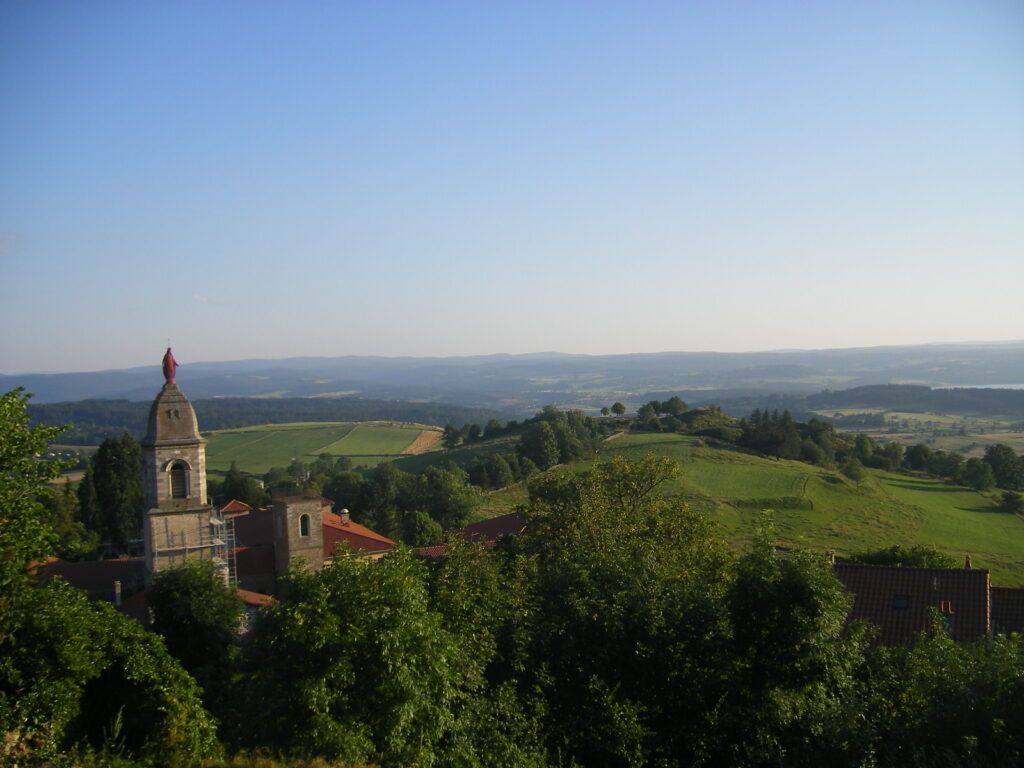
19. Saint-Antoine-l’Abbaye, Isère
⭐ Labeled “Les Plus Beaux Villages de France” (“The most beautiful villages of France”).
The village of Saint-Antoine-l’Abbaye, situated between Isère and Drôme, is a medieval treasure at the gates of Vercors. The annual medieval festival is a must-visit, with over 200 artists and 500 costumed participants. The site is enriched by the abbey church, the Musée Départemental, and the medieval garden, revealing the artistry and history of the place. Nearby attractions include Saint-Marcellin, known for its cheese, Pont-en-Royans, Romans and its Shoe Museum, Parc naturel régional du Vercors, Grotte de Choranche, and the unique Palais idéal du facteur Cheval à Hauterives.
Venturing into the heart of Parc Naturel Régional du Pilat, the village once a chartreuse, boasts the 17th-century conventual church, Chartreux’s kitchen, the grand cloister, and an ermitage – all preserved by the Association de Sauvegarde de la Chartreuse et du Parc.
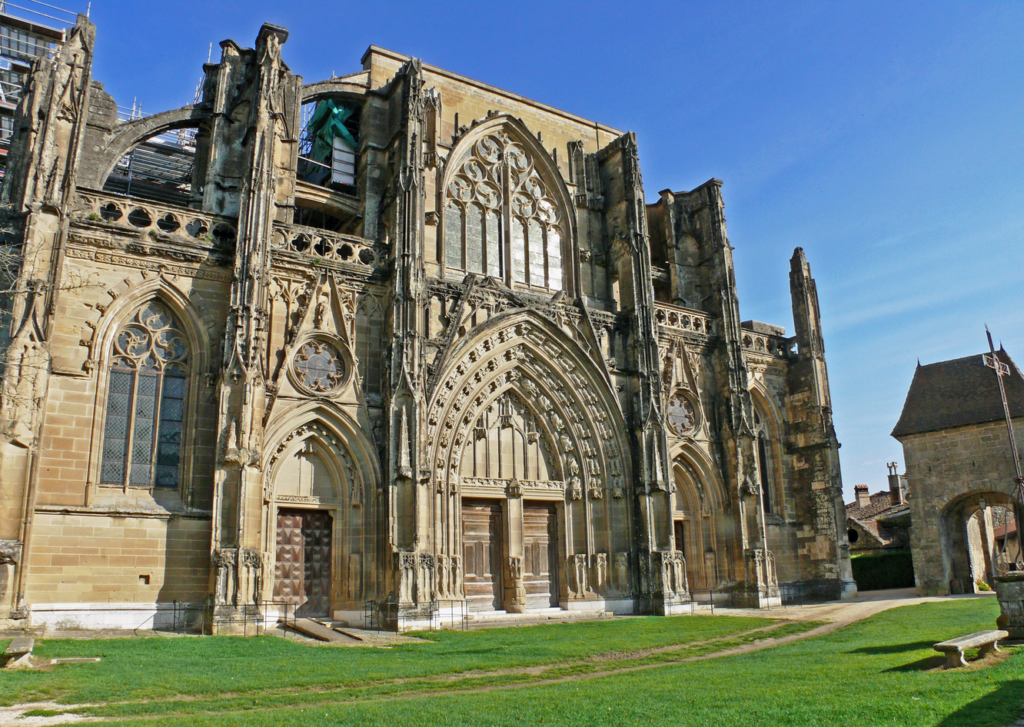
20. Sainte-Croix-en-Jarez, Loire
⭐ Labeled “Les Plus Beaux Villages de France” (“The most beautiful villages of France”).
In the heart of a hilly landscape of the Pilat Regional Natural Park, a Carthusian monastery has been transformed into a village. While today homes occupy a large part of the religious buildings on the site, the seventeenth-century conventual church and its remarkable furnishings, the Carthusians’ kitchen, the large cloister, and a hermitage are open to visitors, thanks to the work of the Association for the Safeguarding of the Carthusian Monastery and the Park.

21. Salers, Cantal
⭐ Labeled “Les Plus Beaux Villages de France” (“The most beautiful villages of France”).
High in the monts Cantaliens is Salers, known for its medieval heritage and local produce, including its famous cheese. The village is a hub for “La Pastourelle”, a series of mountain races, trails, and festive evenings celebrating local products. Points of interest include église Saint-Mathieu, musée de Salers, and the panoramic esplanade de Barrouze. Nearby, the Pays de Salers offers a plethora of mountain activities in the Parc Naturel Régional des Volcans d’Auvergne, and don’t miss Tournemire, another beautiful village with a stunning medieval castle.
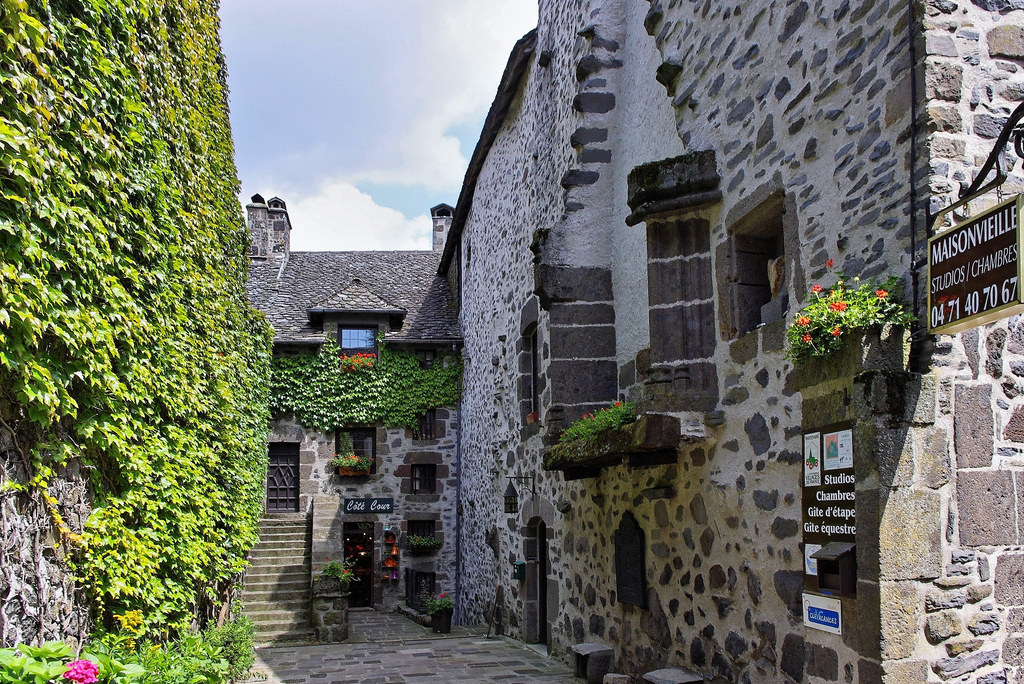
22. Tournemire, Cantal
⭐ Labeled “Les Plus Beaux Villages de France” (“The most beautiful villages of France”).
The charming, green village of Tournemire in the Cantal mountains is overseen by the square-built château d’Anjony with its four round towers. The 12th-century Roman church and traditional Cantalian homes add to its allure.
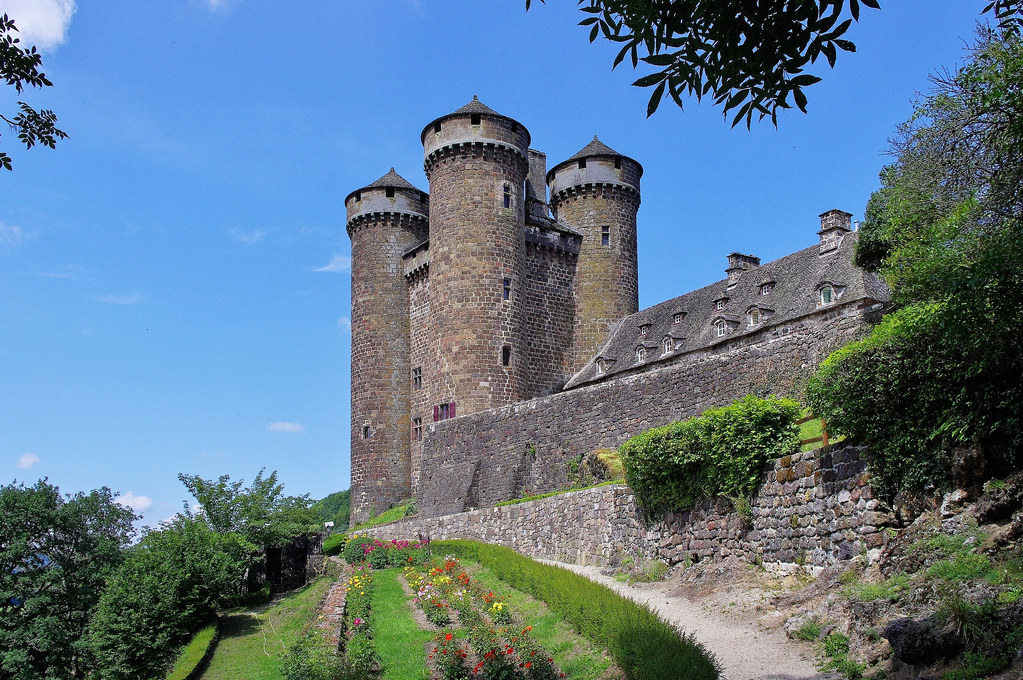
23. Usson, Puy-de-Dôme
⭐ Labeled “Les Plus Beaux Villages de France” (“The most beautiful villages of France”).
Usson, located on a volcanic piton, is a village of black stone winemaker houses, once dominated by a castle that was the exile place of Queen Margot for 19 years. A trail south of the Saint-Maurice Roman church leads to the village’s basaltic organs.
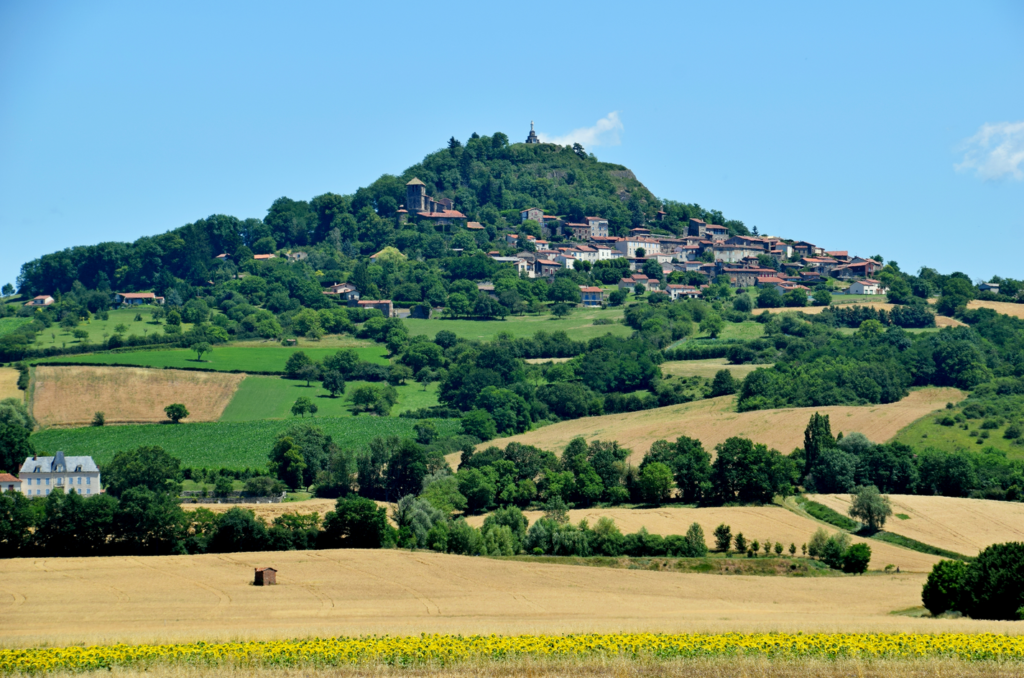
24. Vogüé, Ardèche
⭐ Labeled “Les Plus Beaux Villages de France” (“The most beautiful villages of France”).
In Vogüé, the château des Seigneurs de Vogüé watches over the amphitheater-like village and its lovely warm-colored houses. The ancient viaduct built in 1877 is now a picturesque greenway, a testament to the complex art of stone-cutting known as “stereotomy”.
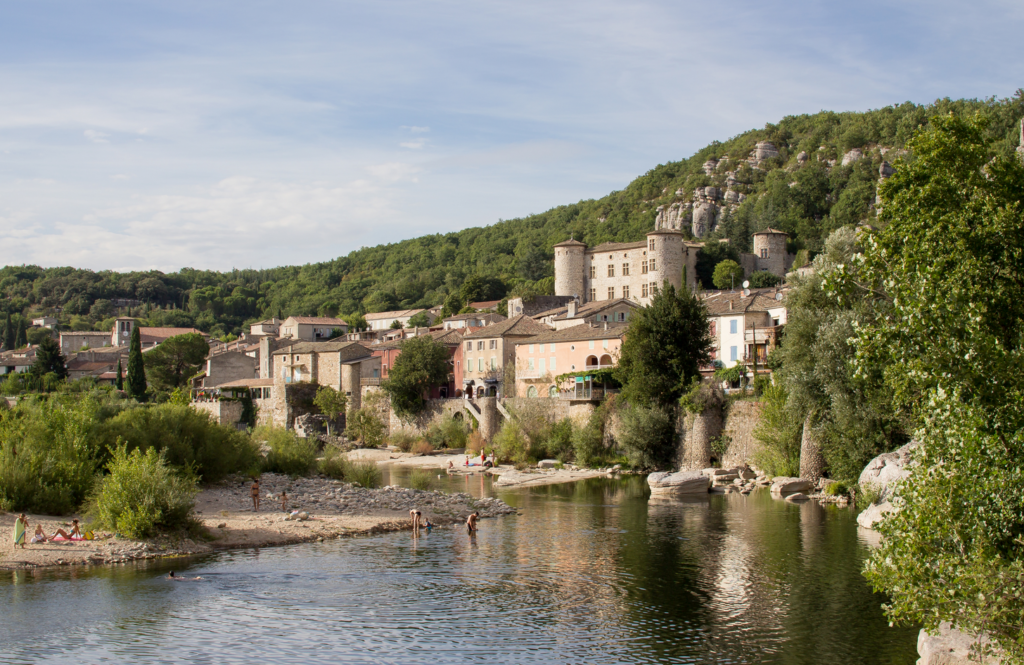
25. Yvoire, Haute-Savoie
⭐ Labeled “Les Plus Beaux Villages de France” (“The most beautiful villages of France”).
Lastly, the stone houses with wooden balconies and flower-filled streets of Yvoire, known as “the pearl of Léman”, overlook the lake. The square tower is a reminder of the village’s medieval past, fortified by Amédée V the Great, Count of Savoy.
